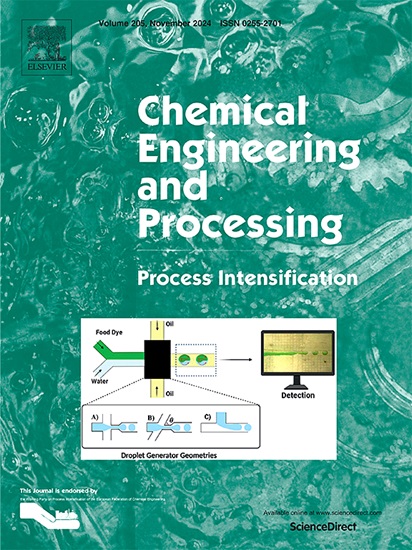环境生命周期评价与工艺强化中的绿色原则:新型固体废物催化剂研究进展
IF 3.8
3区 工程技术
Q3 ENERGY & FUELS
Chemical Engineering and Processing - Process Intensification
Pub Date : 2025-02-13
DOI:10.1016/j.cep.2025.110208
引用次数: 0
摘要
从固体废物中开发新型催化剂已成为可持续研究的关键策略。本文综述了废物衍生催化剂的环境生命周期评价(LCA),强调了它们在过程强化和符合绿色化学原则方面的作用。LCA对于评估从废料中生产催化剂的环境、社会经济和设计意义至关重要。固体废物的持续处置导致能源需求增加、环境退化和人类健康风险,这突出表明需要高效、绿色的解决办法。本文审查了废物来源的多相催化剂的发展,强调了它们在循环经济和可持续实践中的重要性。分析和物理化学性质对常规和强化过程的影响进行了探索,反应时间和温度被确定为催化剂合成的关键参数。传统的催化剂生产通常涉及高温(600至900°C)和长反应时间(4-5小时),是能源密集型的。然而,工艺强化,将这些条件降低到100°C和100分钟,通过在保持催化剂性能的同时最大限度地减少能耗,提供了可持续的替代方案。本文还比较了各种分析技术,如x射线衍射、扫描电子显微镜和密度泛函理论,以评估通过强化方法生产的催化剂的有效性。研究结果表明,强化合成过程产生的结果与传统方法相当,证明了它们在减少能源需求和促进固体废物催化剂生产的可持续性方面的潜力。本文章由计算机程序翻译,如有差异,请以英文原文为准。

Environmental life-cycle assessment and green principles in process intensification: A review of novel catalysts from solid waste
The development of novel catalysts from solid waste has become a key strategy in sustainable research. This review focuses on the environmental life-cycle assessment (LCA) of waste-derived catalysts, highlighting their role in process intensification and alignment with green chemistry principles. LCA is crucial for evaluating the environmental, socioeconomic, and design implications of catalyst production from waste materials. The continuous disposal of solid waste contributes to rising energy demands, environmental degradation, and human health risks, which underscores the need for efficient, green solutions. This review examines the evolution of waste-derived heterogeneous catalysts, emphasizing their significance in the circular economy and sustainable practices. The impact of analytical and physico-chemical properties on both conventional and intensified processes is explored, with reaction time and temperature identified as critical parameters in catalyst synthesis. Conventional catalyst production, often involving high temperatures (>600 to <900°C) and long reaction times (4–5 hours), is energy intensive. However, process intensification, reducing these conditions to <100°C and <100 minutes, offers a sustainable alternative by minimizing energy consumption while maintaining catalyst performance. This review also compares various analytical techniques, such as X-ray diffraction, scanning electron microscopy, and density functional theory, to assess the effectiveness of catalysts produced through intensified methods. The findings suggest that intensified synthesis processes yield results comparable to traditional methods, demonstrating their potential to reduce energy demand and promote sustainability in catalyst production from solid waste.
求助全文
通过发布文献求助,成功后即可免费获取论文全文。
去求助
来源期刊
CiteScore
7.80
自引率
9.30%
发文量
408
审稿时长
49 days
期刊介绍:
Chemical Engineering and Processing: Process Intensification is intended for practicing researchers in industry and academia, working in the field of Process Engineering and related to the subject of Process Intensification.Articles published in the Journal demonstrate how novel discoveries, developments and theories in the field of Process Engineering and in particular Process Intensification may be used for analysis and design of innovative equipment and processing methods with substantially improved sustainability, efficiency and environmental performance.

 求助内容:
求助内容: 应助结果提醒方式:
应助结果提醒方式:


